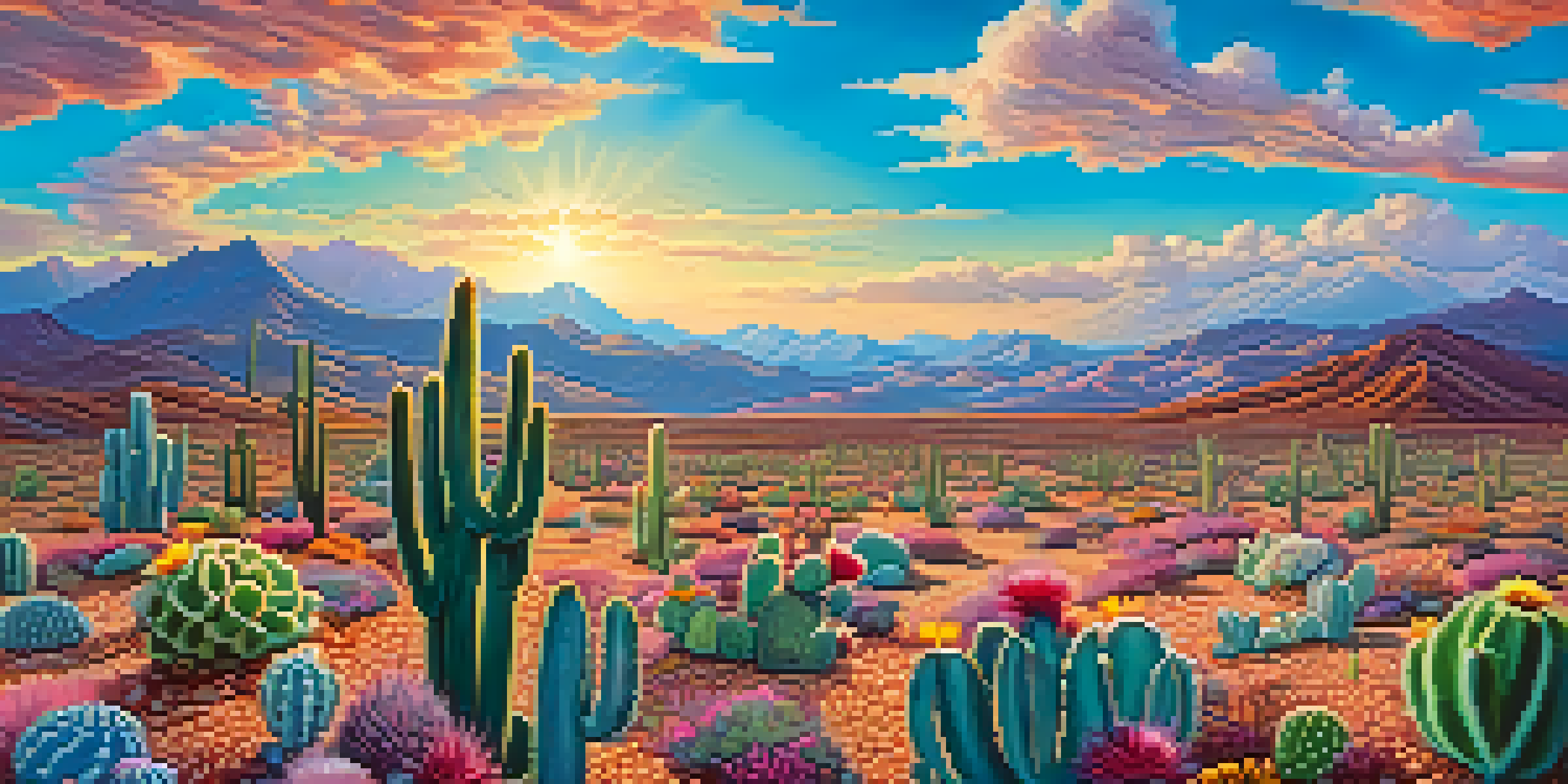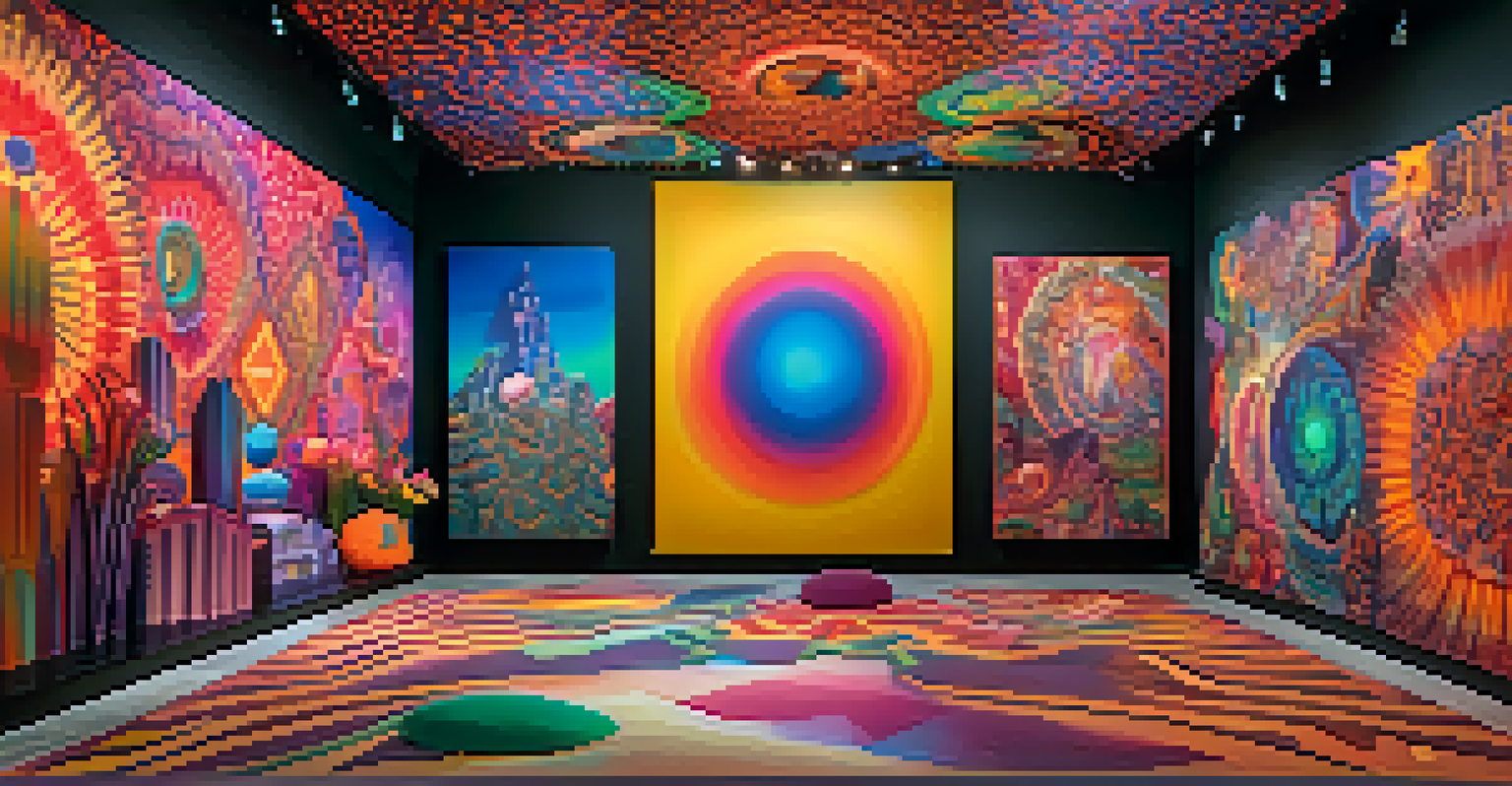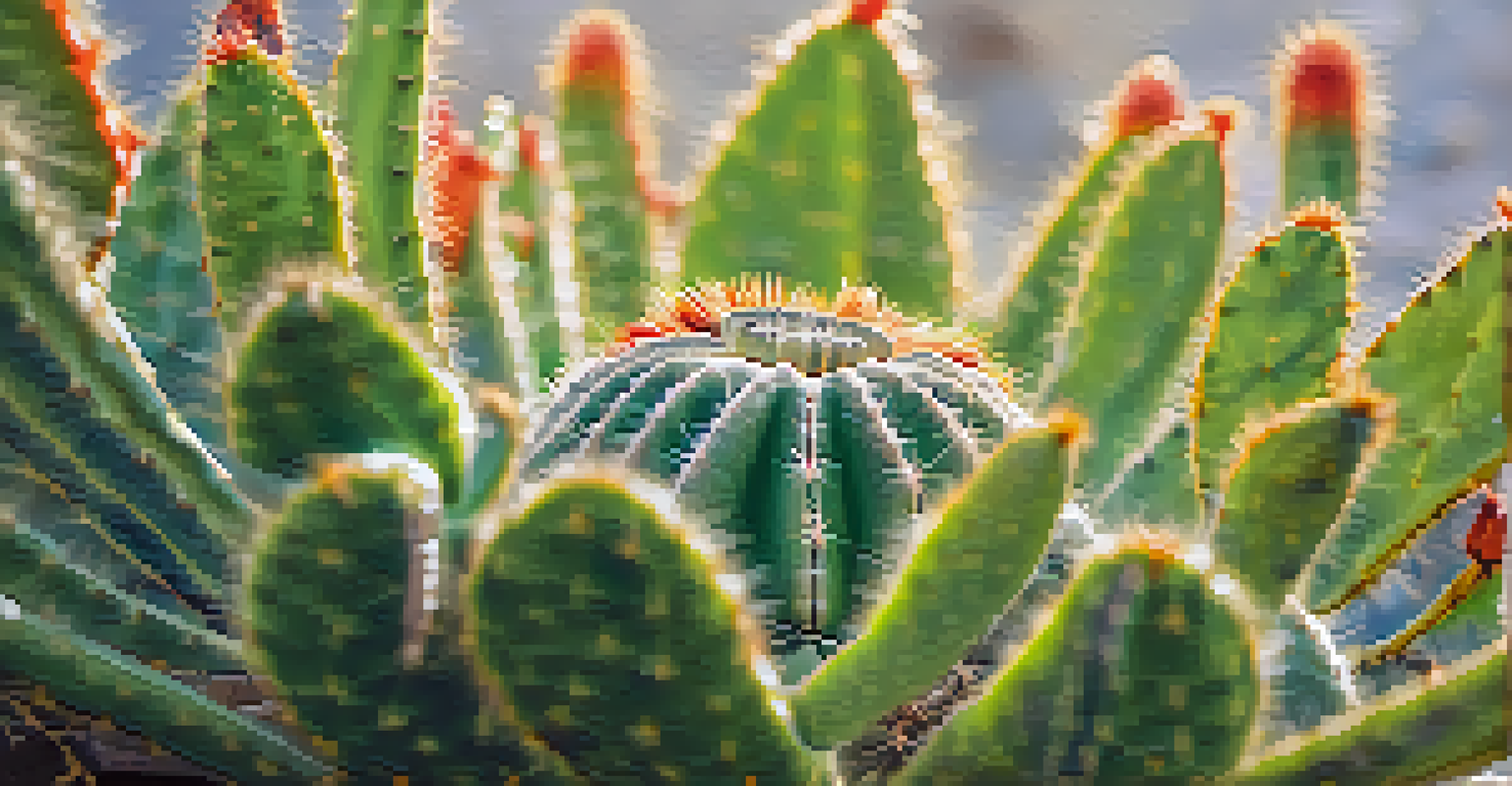Exploring Peyote's Influence on Contemporary Art Movements

Understanding Peyote's Cultural Significance
Peyote, a small cactus native to Mexico and southwestern USA, holds profound cultural and spiritual significance for many Indigenous peoples. Traditionally used in religious ceremonies, it is known for its psychoactive properties, which can induce altered states of consciousness. This deep-rooted connection to spirituality and nature is often reflected in the art created by these communities, serving as a visual representation of their beliefs and experiences.
Art is the most beautiful of all lies; it is a lie that reveals the truth.
In contemporary society, peyote has garnered interest beyond Indigenous culture, often being explored in various artistic expressions. Artists draw inspiration from its symbolism, exploring themes of connection, identity, and transcendence. This cultural exchange raises questions about appropriation and respect, highlighting the need for a nuanced understanding of peyote's role in both historical and modern contexts.
As we delve into contemporary art movements, we find that peyote's influence is not just about aesthetics; it invites us to engage with deeper philosophical inquiries. By examining how artists incorporate peyote into their work, we can appreciate the blending of traditional and modern ideas, which enrich our understanding of art's evolving landscape.
Psychedelia: The Artistic Movement Inspired by Altered States
The Psychedelic Art movement of the 1960s and 1970s was heavily influenced by the exploration of altered states of consciousness, often facilitated by substances like peyote. This movement is characterized by vibrant colors, intricate patterns, and surreal imagery, all aimed at reflecting the mind-expanding experiences of its creators. Artists like Peter Max and the use of light shows in concerts exemplified how peyote’s effects could translate into visual forms.

Psychedelic art sought to challenge perceptions of reality, encouraging viewers to experience art as a journey rather than a destination. The incorporation of peyote imagery and themes into this art form speaks to a broader desire to connect with profound experiences and the subconscious mind. This artistic exploration continues to resonate today, as contemporary artists draw upon these ideas to push boundaries.
Peyote's Cultural Significance
Peyote serves as a vital symbol in Indigenous art, reflecting deep spiritual connections and contemporary cultural narratives.
In contemporary settings, we see a resurgence of psychedelic themes, often intertwined with technology and digital art. As artists experiment with virtual reality and immersive experiences, the visual language of psychedelia, rooted in peyote's influence, remains a vibrant part of the dialogue about consciousness and perception in art.
Peyote in Indigenous Art: A Resurgence of Traditional Practices
Indigenous artists are increasingly incorporating peyote into their work, using it as both a subject and a medium to reclaim cultural narratives. This resurgence reflects a desire to honor traditional practices while addressing contemporary issues faced by Indigenous communities. Through painting, sculpture, and textile art, these artists express their relationship with peyote, highlighting its significance in rituals and healing.
Creativity takes courage.
For many Indigenous artists, creating work that includes peyote is a way to educate others about their culture and the importance of preserving these traditions. By sharing their stories and experiences, they challenge stereotypes and foster a greater understanding of Indigenous identity. This cultural pride not only enriches the art scene but also creates spaces for dialogue and reconciliation.
As contemporary art continues to evolve, the integration of peyote in Indigenous art serves as a powerful reminder of the importance of cultural heritage. It emphasizes the need for recognition and respect for Indigenous perspectives, encouraging a deeper appreciation of the role that peyote plays in shaping artistic expression.
The Intersection of Nature and Art: Environmental Themes
Many contemporary artists are exploring environmental themes, and peyote serves as a poignant symbol of the relationship between nature and humanity. Through their work, artists highlight the ecological importance of peyote and the need for conservation. This connection to the land not only speaks to the significance of peyote in Indigenous cultures but also raises awareness about environmental issues facing ecosystems today.
Artistic practices that reflect upon natural elements often evoke a sense of mindfulness, encouraging viewers to consider their place within the environment. By using peyote imagery, artists can foster a conversation about sustainability and the interconnectedness of all living things. This approach not only elevates the aesthetic value but also imbues the work with a sense of responsibility and hope.
Psychedelic Art Movement
The Psychedelic Art movement draws inspiration from altered states of consciousness, emphasizing vibrant colors and surreal imagery influenced by substances like peyote.
The blending of ecological concerns with artistic expression allows for a dialogue that transcends traditional boundaries. Artists are inviting audiences to engage with their work on multiple levels, prompting deeper reflections on how we coexist with nature, making peyote a vital element in this ongoing conversation.
Modern Surrealism: Peyote's Role in Dreamlike Imagery
Modern surrealist artists often draw on the dreamlike qualities associated with peyote experiences to create works that challenge reality. This movement, characterized by bizarre scenes and illogical juxtapositions, mirrors the altered states induced by peyote, offering a fascinating exploration of the subconscious. Artists like Salvador Dalí and Max Ernst paved the way for contemporary creators to embrace these themes.
By incorporating peyote into their art, modern surrealists invite viewers to question their perceptions of reality. The use of vibrant colors and fluid forms can evoke the sensations experienced during a peyote journey, encouraging a personal interpretation of the work. This connection to the unconscious mind can lead to profound insights, making art a vessel for exploration and understanding.
As contemporary surrealists continue to delve into themes of altered perception, peyote remains a relevant touchstone. By bridging the gap between the mystical and the tangible, artists are fostering a deeper appreciation for the complexities of human experience, emphasizing the power of imagination.
The Role of Psychedelic Spaces in Contemporary Art Exhibits
Contemporary art exhibits are increasingly embracing psychedelic spaces, where the influence of peyote can be felt in the immersive environments created for audiences. These spaces often utilize vibrant colors, dynamic lighting, and interactive elements to engage viewers on multiple sensory levels. The goal is to create an experience that mimics the mind-expanding effects of psychedelics, inviting participants to journey through art in a new way.
Artists are experimenting with installations that encourage exploration and interaction, often drawing from the aesthetic language of peyote and other psychedelic experiences. This shift in presentation reflects a growing desire to create art that transcends traditional viewing, fostering connections between the audience and the artwork. By transforming galleries into these immersive environments, artists are inviting deeper contemplation and participation.
Environmental Themes in Art
Contemporary artists incorporate peyote imagery to address ecological concerns, fostering mindfulness and dialogue about sustainability.
As we navigate through these psychedelic spaces, we see a fusion of art, technology, and human experience. The incorporation of peyote themes into these exhibits not only elevates the overall experience but also prompts a reevaluation of how we engage with art in a rapidly changing world.
Future Directions: Peyote's Continued Influence in Art
As we look to the future, the influence of peyote on contemporary art movements is likely to evolve further. The ongoing dialogue about psychedelics and their potential therapeutic benefits is opening up new avenues for artistic exploration. Artists are increasingly experimenting with these themes, using peyote as a lens through which to examine identity, spirituality, and society's relationship with nature.
The rise of digital art and virtual reality also presents exciting possibilities for incorporating the psychedelic experience into artistic practices. By leveraging technology, artists can create immersive experiences that echo the mind-altering effects of peyote, inviting audiences to engage in new and transformative ways. This expansion of artistic mediums allows for greater experimentation and expression.

Ultimately, the future of art influenced by peyote will hinge on a balance between honoring traditional practices and embracing innovation. As artists continue to draw inspiration from peyote, they will play a vital role in shaping the cultural narrative, ensuring that its significance is recognized and celebrated in contemporary society.